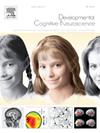来自ABCD和NeuroSmog研究的空气污染和学龄儿童皮质髓磷脂T1w/T2w比值估计。
IF 4.9
2区 医学
Q1 NEUROSCIENCES
引用次数: 0
摘要
空气污染会影响人类健康,并可能破坏大脑成熟,包括轴突髓鞘化,而轴突髓鞘化对有效的神经信号传递至关重要。在这里,我们使用西门子扫描仪,评估了 "青少年大脑认知发展(ABCD)研究"(美国;N = 2021)和 "NeuroSmog 研究"(波兰;N = 577)中的学龄儿童产前和当前长期暴露于颗粒物(PM)和二氧化氮(NO2)对皮层 T1w/T2w 比率(髓鞘含量的替代物)的影响。在这两个样本中,我们发现二氧化氮和可吸入颗粒物与大脑皮层 T1w/T2w 并无明显关联,只有 PM10 与 NeuroSmog 研究中楔前区较低的 T1w/T2w 有关联。从表面上看,ABCD 研究分析了来自所有类型扫描仪(西门子、通用电气、飞利浦;N = 3089)的数据,结果显示 NO₂ 暴露与 T1w/T2w 比率呈负相关。然而,这一发现可能是不同地点之间社会人口学差异和与扫描仪类型相关的巨大测量差异造成的假象。虽然空气污染与皮质髓鞘之间基本上没有明显的关联,但这些发现并不排除空气污染在其他暴露期/神经发育阶段影响皮质髓鞘的可能性。未来的研究应采用统一的分析方法,对不同人群和不同发育时期的这些关系进行研究,以更好地了解空气污染对神经系统的潜在影响。本文章由计算机程序翻译,如有差异,请以英文原文为准。
Air pollution and cortical myelin T1w/T2w ratio estimates in school-age children from the ABCD and NeuroSmog studies.
Air pollution affects human health and may disrupt brain maturation, including axon myelination, critical for efficient neural signaling. Here, we assess the impact of prenatal and current long-term particulate matter (PM) and nitrogen dioxide (NO2) exposure on cortical T1w/T2w ratios – a proxy for myelin content – in school-age children from the Adolescent Brain Cognitive Development (ABCD) Study (United States; N = 2021) and NeuroSmog study (Poland; N = 577), using Siemens scanners. Across both samples, we found that NO2 and PM were not significantly associated with cortical T1w/T2w except for one association of PM10 with lower T1w/T2w in the precuneus in NeuroSmog. Superficially, ABCD Study analyses including data from all scanner types (Siemens, GE, Philips; N = 3089) revealed a negative association between NO₂ exposure and T1w/T2w ratios. However, this finding could be an artifact of between-site sociodemographic differences and large scanner-type-related measurement differences. While significant associations between air pollution and cortical myelin were largely absent, these findings do not rule out the possibility that air pollution affects cortical myelin during other exposure periods/stages of neurodevelopment. Future research should examine these relationships across diverse populations and developmental periods using unified analysis methods to better understand the potential neurotoxic effects of air pollution.
求助全文
通过发布文献求助,成功后即可免费获取论文全文。
去求助
来源期刊

Developmental Cognitive Neuroscience
NEUROSCIENCES-
CiteScore
7.60
自引率
10.60%
发文量
124
审稿时长
6-12 weeks
期刊介绍:
The journal publishes theoretical and research papers on cognitive brain development, from infancy through childhood and adolescence and into adulthood. It covers neurocognitive development and neurocognitive processing in both typical and atypical development, including social and affective aspects. Appropriate methodologies for the journal include, but are not limited to, functional neuroimaging (fMRI and MEG), electrophysiology (EEG and ERP), NIRS and transcranial magnetic stimulation, as well as other basic neuroscience approaches using cellular and animal models that directly address cognitive brain development, patient studies, case studies, post-mortem studies and pharmacological studies.
 求助内容:
求助内容: 应助结果提醒方式:
应助结果提醒方式:


